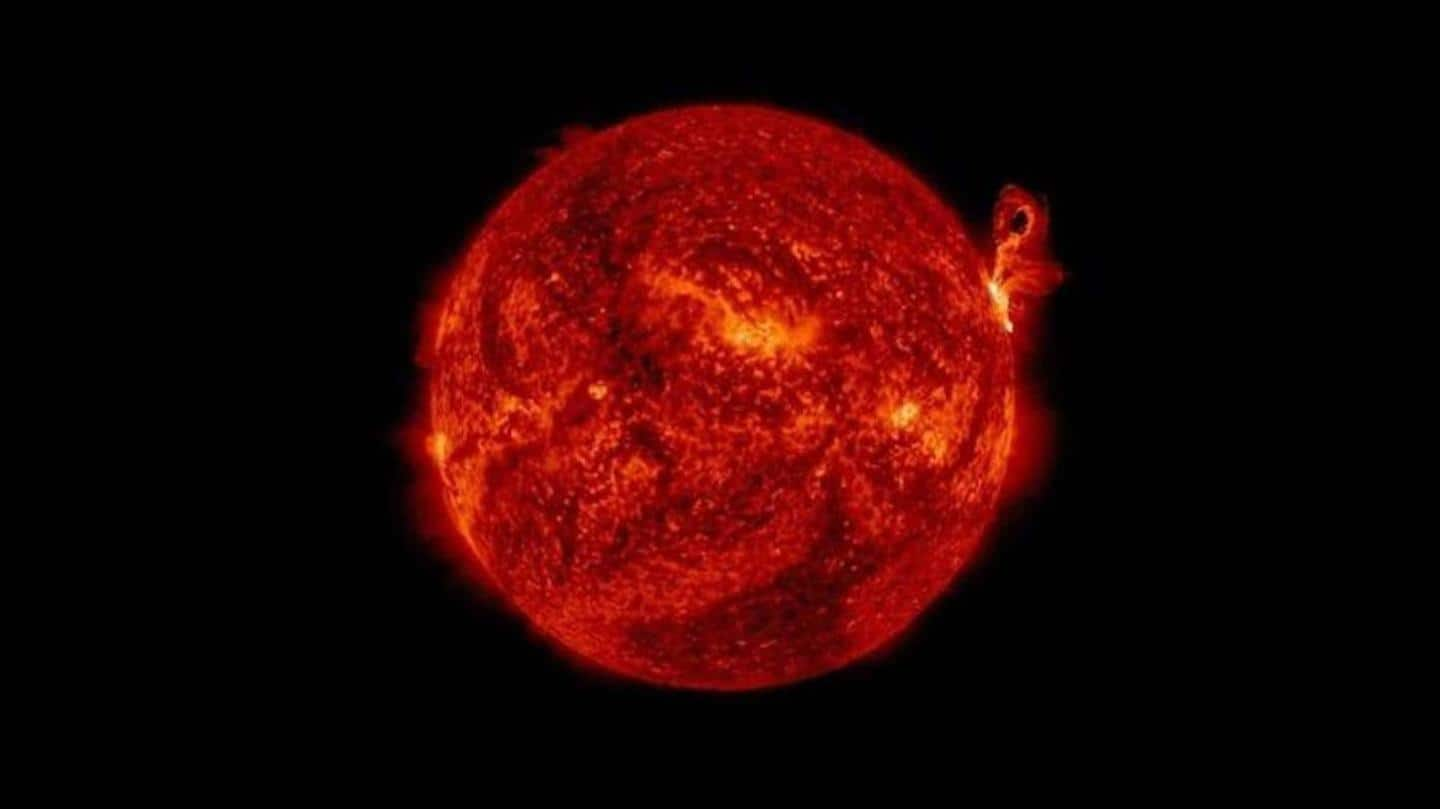
Beware! Geomagnetic storm to hit Earth today: Understanding the phenomenon
What's the story
The US's National Oceanic and Atmospheric Administration (NOAA) has announced Earth may be hit by a geomagnetic storm on Wednesday. To recall, an explosion occurred on the Sun on Sunday, and it hurled a C9.3-class solar flare toward us. After coming in contact with our atmosphere, this flare might cause a storm, resulting in communication system disruptions and power cuts. Let's understand this phenomenon.
Context
Why does this story matter?
Incidents of geomagnetic storms are expected to become more commonplace as the Sun is embarking on a new 11-year solar cycle. This new storm predicted by NOAA is unlikely to cause any significant damage. However, we might be hit with power outages. Breakdown of satellite communications for a short time span and migratory animals losing their way arealso possible.
Location
Where is the flare coming from?
The huge explosion on the Sun was initially hidden by its edge. However, hot debris spewing from the site was recorded by the National Aeronautics and Space Administration's (NASA) Solar Dynamics Observatory. The gaseous material is flowing out from a southern hole in the Sun's atmosphere, and Earth is unlikely to witness any major impact. However, a low-intensity geomagnetic storm may still occur.
Definition
What are geomagnetic storms?
Magnetic storms occur when strong solar winds called coronal mass ejections disturb the outer portion of Earth's magnetic field and generate electric currents, which in turn generate additional magnetic field variations. Such storms also happen when the Sun and Earth's magnetic fields get directly linked. When a magnetic storm occurs, charged particles enter the magnetosphere and generate currents, which cause magnetic field variation.
Information
What are the effects of geomagnetic storms?
Once the Sun's charged particles graze our planet, the surrounding magnetic field deflects it toward the poles and causes natural light displays called auroras. However, when radiation bursts are severe, they create their own magnetic field and induce electrical currents resulting in power grid fluctuations.
Variants
How many types of geomagnetic storms exist?
Geomagnetic storms are of two types: recurrent and non-recurrent. The recurrent ones generally take place every 27 days during the declining phase of the solar cycle. They are triggered by Earth's south-oriented magnetic field present in the high-pressure regions. Meanwhile, the non-recurrent ones occur more frequently during solar maximum. They are caused by disturbances driven by fast-moving coronal mass ejections.